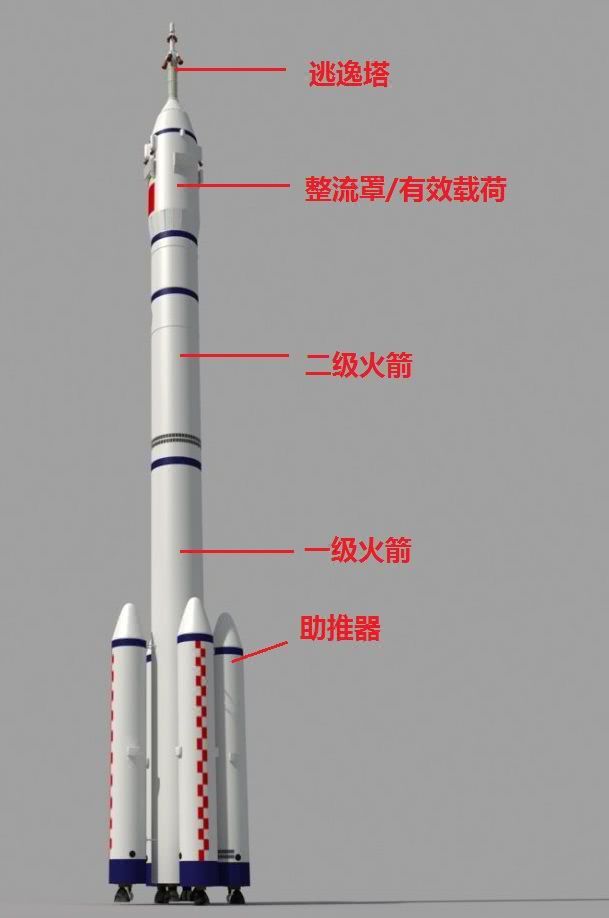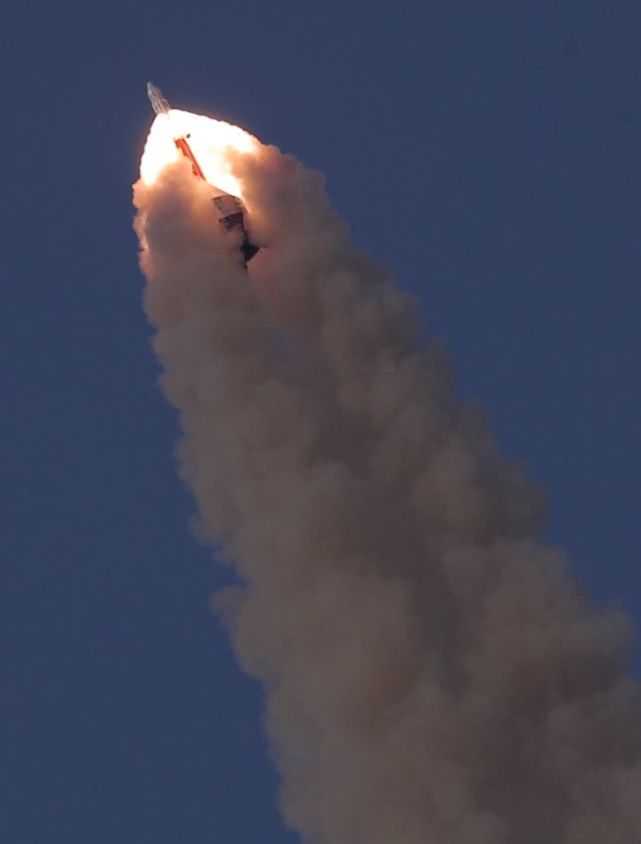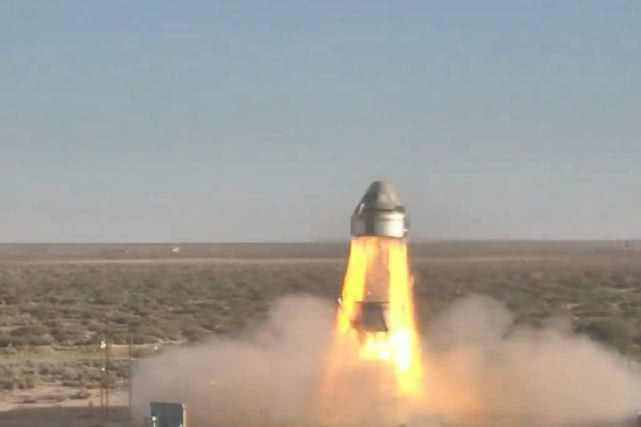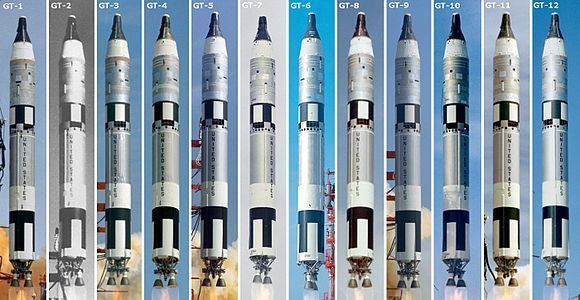Musk used the cost of a rocket to complete the Dragon Manned Dragonship escape system test.
Editor’s note: This article comes from Tencent Technology , author Tencent Technology & Zhihu .
At 23:30 on January 19, 2020, Beijing time, SpaceX’s Falcon 9 rocket was launched at the Kennedy Space Center, and then a “manned version” dragon ship escaped the air successfully.
It is reported that when the Falcon 9 rocket took off for about 84 seconds, flying at a height of 19 kilometers and a speed of about Mach 2.3, the spacecraft on top of the rocket started its own 8 escape engines and pushed the spacecraft away from the rocket. Subsequently, the rocket exploded under strong aerodynamic pressure and crashed into the Atlantic Ocean.
The purpose of this test is to simulate a situation in which a rocket accidentally starts during a flight, and the spacecraft urgently starts the engine and leaves the rocket. If it is simply summarized in one sentence, Musk uses the cost of a rocket to complete the test of the Dragon Manned Dragon Vessel Escape System.
In this regard, the excellent answer to the question on space, “Space Craft”, gave a detailed interpretation of the launch escape system, and Tencent Technology sorted it out a bit.
1. Why test the launch escape system?
Manned spaceflight is the brightest star in space technology. Due to the existence of human beings and the extremely fragile body of human beings, manned spaceflight requires a large number of complex technologies to ensure human safety, such as the need for specific rockets, launch sites, manned spacecraft, and landing field systems. The overall cost and technology are complex. Degree increased sharply. Therefore, only Russia, the United States, and China can do this in the world.

China’s Long March 2F is the only manned space rocket, the most typical feature is the rocket escape system (escape tower) on the top
In the core technology of manned aerospace engineering, the launch escape system is undoubtedly one of the most important technologies. A manned rocket can often send astronauts into space in about 10 minutes. From the time when astronauts enter the manned spacecraft on top of the rocket until they enter space, it must be ensured that in the event of an emergency, astronauts can quickly escape from the rocket, and the escape system becomes the only possibility for them to survive.
So any manned spacecraft and rocket must go through extremeRigorous launch escape test.
Second, how high is the requirement for the launch escape system?
The essence of a rocket is a controlled-fire super explosive. Propellants are often extremely flammable, have high energy density, and occupy about 90% of the overall mass of the rocket, which means that once it has dangerous consequences, it is unimaginable. For example, the Soviet Union’s N1 moon landing rocket weighed 3,000 tons and exploded four times during its launch. It also entered the list of recorded artificial explosion (non-nuclear) energy of human beings. In the end, this rocket mission was declared a failure, and it also declared the disillusionment of the Soviet Union’s dream of landing on the moon.

India conducted an escape system test for its manned space program in 2018
When an explosion occurs, the escape system must work quickly to take astronauts out of the rocket as safely as possible. But at the same time, it must be ensured that the acceleration cannot be too large, otherwise it will cause permanent damage to the astronauts and even death. It is very difficult to control both speed and direction.
For example, the escape system was activated during the Alliance T-10-1 mission in 1983, but it was up to 16 times overweight, which had a great impact on the astronauts ’body. This is equivalent to the impact caused by a person driving a car with a speed of more than 600 kilometers per hour to fully brake in 1 second!
3. What are the ways to launch the escape system?
Technically, there are currently two main types of launch escape systems.
1. Escape tower or advance escape system
The escape tower is currently the most mature escape method. Its design principle is simple and effective: it uses a super powerful solid fuel engine. The escape tower is installed on the top of the rocket and is closely connected with the manned spacecraft. When it is in danger, it starts work quickly and flees the spacecraft rocket. If there is no danger during the launch, it will actively disengage.
This is the most mainstream escape system design method for manned spacecraft in the world. The US Mercury spaceship, Apollo spaceship, Orion spaceship, Soviet / Russian ascension spaceship, alliance spaceship, China’s Shenzhou spaceship, and India’s orbital aircraft under development all adopt this method.

After entering the new century, especially the American Commercial Aerospace Corporation has given another similar solution, except that they adopt the escape power system in the spacecraft itself or the service compartment at the bottom of the spacecraft. That’s the case with SpaceX’s Dragon 2 spacecraft, Boeing’s CST-100 Starliner, and the blue-sourced New Shepard spacecraft.
For example, the Dragon 2 spacecraft uses a reusable engine and liquid fuel, making this escape system reusable like a spaceship.
2. Ejection method
As the name suggests, this way ejects the astronaut out of the spacecraft, and the astronaut then parachutes to escape. Its advantage is that it can protect astronauts during takeoff and landing. But the downside is obvious: too much risk.
Thus, this technology has only been used in the early stage of aerospace technology. A typical case is the Soviet spacecraft Orient. Gagarin and Valentina rely on it to become the world’s first male astronaut and female astronaut respectively, but when they finally return to Earth, they need to be ejected and parachute.
To fight for the first place in the world at the time, the risks were unimaginable now.

The American Gemini spacecraft is also designed to eject, but this is due to the characteristics of the rocket and the original planned return technical characteristics (glider return). Even if the original way of return was eventually cancelled, the time has not allowed the redesign of the escape tower scheme in the context of the Sumerian Moon Landing Competition. Therefore, the Gemini has carried out 12 missions in this case, and has cultivated all Apollo moon landing astronaut.
But overall, this technology is immature. The space shuttle also adopted this scheme early in the design process. After the Challenger bombing accident, it also considered resuming the scheme, but in the end it remained. The space shuttle usually carries seven astronauts. It is impossible to allow so many people to pop out at the entrance and exit. This is also one of the flaws of the space shuttle.
Fourth, how to test the launch escape system?
In addition to the regular engine test, the whole system test has two main steps.
1. Static test. The simulated rocket still stayed on the launch pad. Once the danger occurred, the system emergency started to take the spacecraft off the launch platform, and finally landed safely. This step requires repeated testing, such as SpaceX has been tested with the Dragon 2 spacecraft back in 2015. In early 2019, the Dragon 2 spacecraft also conducted an engine test after returning to Earth for the first time. However, the engine accident caused an explosion, so the test on January 18 was performed with a new spacecraft.
2. Flight status test. At this point the rocket was already in flight, simulating an emergency situation, and the escape system quickly started to flee with the spacecraft, which was also the scene during the test on January 18. Because such tests generally require the use of a rocket carrier, they are extremely expensive and often win by quality.
5. What are the highlights of this test?
Long spacecraft has carried out a number of engine ignition experiments and stationary start tests, this time it is the test in flight. In terms of the test time node, the Dragon 2 spacecraft selected the most complex moment in the rocket launch process: the maximum dynamic pressure point.
At the maximum dynamic pressure point, the entire rocket will be greatly impacted. Because the rocket is still in a dense atmosphere in the initial stage after launch, the rocket will be subject to strong atmospheric resistance, or dynamic pressure, which is proportional to the rocket speed and atmospheric density. Although the air density gradually decreases as the speed of the rocket gradually increases during flight, there is a point in time when the dynamic pressure reaches a maximum value. For the Falcon 9 rocket, this point is often around 78 seconds after launch and the altitude is 13 kilometers. about.
It can be said that this is the most dangerous moment after the launch of the rocket. Selecting this time point to test, so the success is quite convincing.
6. Can the rockets be recovered?
Falcon series rockets are best known for recycling and reuse technology, but this often requires the rocket to first separate the first stage and the second stage, the time point is about 170 seconds after launch.
For the rocket as a whole, the core that determines the aerodynamic performance is the top, which is why the top cone is often called a fairing. Even if there is an escape tower, it will be made sharp. The Dragon 2 does not require additional fairing protection, because its shape acts as a fairing.
But the spacecraft separation occurred earlier than the first and second stage separation of the rocket, and this is the moment when the rocket suffered the most aerodynamic impact. Once the spacecraft leaves, the rocket as a whole will suffer huge disturbances, and it is likely to disintegrate quickly in the air, or SpaceX will start a self-destruct procedure to try to reduce the potential danger of the entire rocket.
But don’t worry about waste. One of SpaceX’s current problems is that there are too many rockets to be recycled and the warehouse can’t fit in. It is not a bad thing to take advantage of this opportunity to clear the inventory. As for the first-stage rocket to be used in this test, it has completed three space launches, and this is the fourth time it has been launched.
After this test is completely successful, the Dragon 2 spacecraft will finally be qualified to fly to the International Space Station. For NASA, this means the U.S. will regain space launches from U.S. soil since the shuttle retired in 2011The ability of crew members to enter space.